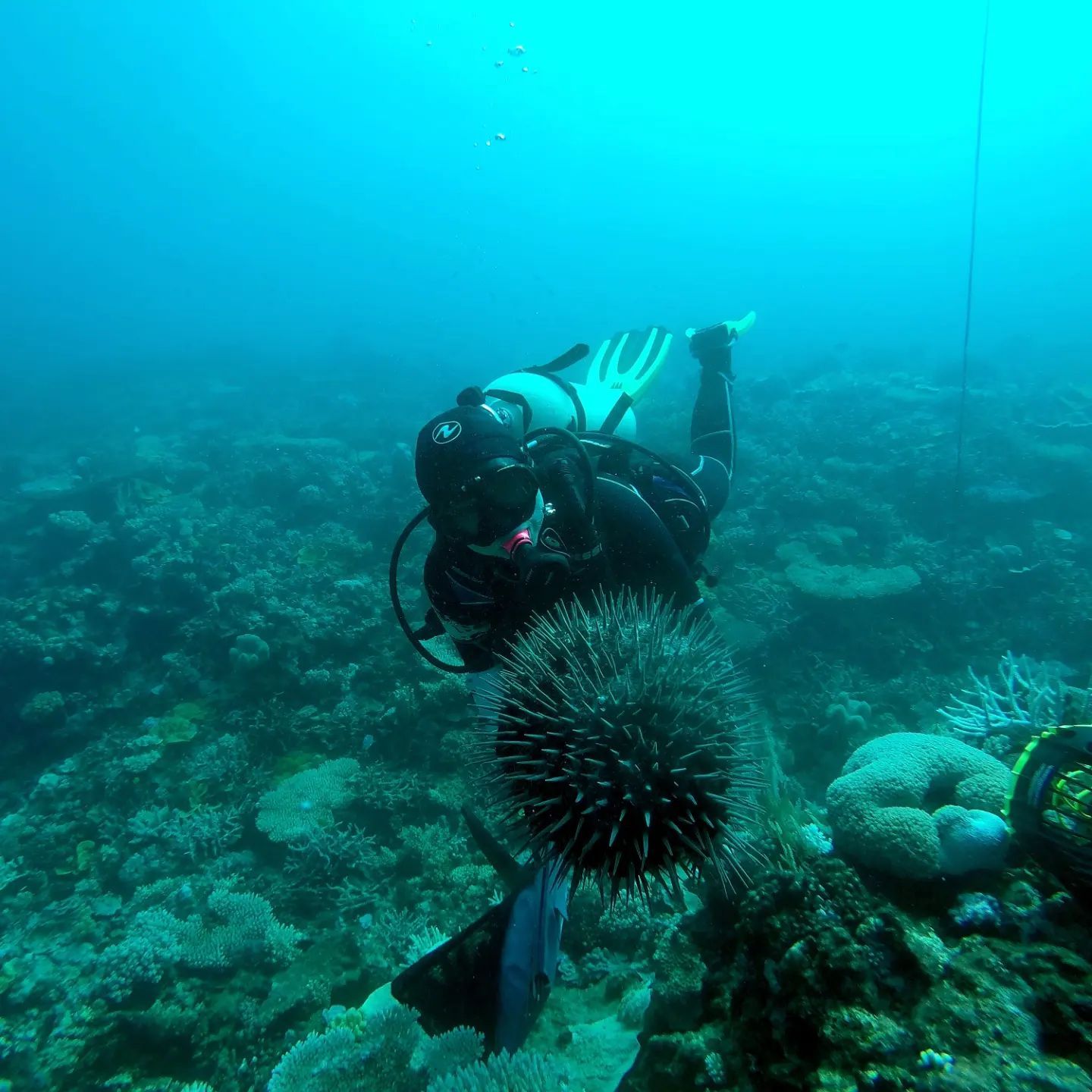The crown-of-thorns starfish (CoTS) could become another victim of climate change as its environment warms up and its coral prey bleaches.
Studies have shown that CoTS, which are native marine animals, are a major cause of coral loss on the Great Barrier Reef.
James Cook University PhD student Bethan Lang led a study of how young CoTS fared as the water temperature increased.
“In an earlier study I found a high mortality rate in adult CoTS when the water temperature reached 32°C,” she says.
“In these experiments I wanted to learn more about how a warming ocean could affect their earlier life stages.
Ms Lang reared CoTS larvae in the National Sea Simulator at the Australian Institute of Marine Science, and conducted her experiments at the ARC Centre of Excellence for Coral Reef Studies, at JCU.
She says early in their development, as planktonic larvae, the CoTs need to attach to the coralline algae that encrusts the surface of the reef.
“That’s their preferred settlement substrate, and we observed that the attachment process was relatively unaffected by temperatures up to 34°C.
“It was at the next stage where rising temperatures were clearly an issue.
“The transformation of larval CoTS to juveniles, and the survival of the early juveniles, were much lower at temperatures of 30 to 32°C. Also, at 32 °C the coralline algae was bleaching, making it a less suitable base.”
Temperatures between 30 and 32°C are already experienced on the Great Barrier Reef.
Marine heatwaves are increasing in both frequency and intensity on the Reef, with four major coral bleaching events observed since 2016.
“Our observations contribute to the mounting body of evidence that suggests we may see fewer or less severe CoTS population outbreaks in a warmer ocean,” Ms Lang says.
“That might sound like good news for the reef, but we could see a shift in the distribution of CoTS populations, with the starfish posing a greater threat to cooler, more southerly reefs.
“We hope this study will inform CoTS surveillance and control, helping to target efforts to where they are most needed as conditions change.”






